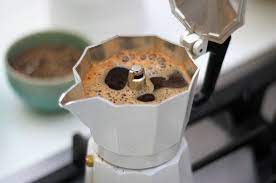Introduction:
There’s nothing quite like a shot of rich, aromatic espresso to kickstart your day or enjoy a mid-afternoon pick-me-up. While espresso machines are the go-to for many coffee lovers, you don’t need one to savor this intense coffee experience. In this guide, we’ll show you how to make espresso without a machine, using simple and accessible methods. Whether you’re a coffee aficionado or just looking to experiment, you’ll be able to enjoy a delicious cup of espresso right at home.
What is Espresso?
Espresso is a concentrated coffee beverage, brewed by forcing hot water through finely-ground coffee beans. It’s known for its bold flavor, rich crema (that frothy layer on top), and strong caffeine kick. Traditional espresso machines are designed to create the perfect conditions for making espresso, but with a little creativity and patience, you can achieve a similar result without one.

Tools and Ingredients:
Before we dive into the methods, let’s gather what you need:
- High-Quality Coffee Beans: Start with fresh, high-quality coffee beans. Espresso beans are ideal, but any medium to dark roast will work.
- Coffee Grinder: You’ll need a grinder to make fine espresso grounds. Burr grinders work best for a consistent grind size.
- Kettle or Pot: To heat water.
- Stovetop or Microwave: To heat water, unless you have a kettle.
- A Scale or Measuring Spoon: To ensure precision in coffee-to-water ratio.
- A Timer: To monitor the brewing time.
- A Fine Mesh Sieve or Cheesecloth (optional): For straining coffee grounds.
- Espresso Cup or Small Mug: To serve your espresso.
Method 1: Moka Pot (Stovetop Espresso Maker)
A Moka pot is a classic, stovetop espresso maker that’s affordable and produces rich espresso-like coffee. Here’s how to use it:
- Add Water: Fill the bottom chamber with hot water up to the safety valve.
- Insert Coffee: Fill the filter basket with finely-ground coffee. Don’t press it down; let it be loosely packed.
- Assemble and Heat: Assemble the Moka pot and place it on a stovetop burner over medium heat.
- Brew: Coffee will start to fill the upper chamber. When you hear a hissing sound, it’s ready. Remove from heat.
- Serve: Pour your espresso into a cup and enjoy!
Method 2: AeroPress
The AeroPress is a versatile, portable device that can make a concentrated coffee similar to espresso. Here’s how:
- Prepare Coffee: Use a fine grind setting and add coffee grounds to the AeroPress chamber.
- Water and Stir: Heat water to just below boiling and pour it over the grounds. Stir for about 10 seconds.
- Plunge: Attach the plunger and gently press down. The pressure creates a rich, espresso-like coffee.
- Serve: Dilute with hot water if desired and enjoy.
Method 3: French Press
A French press can also be used to create a coffee concentrate similar to espresso:
- Coffee and Water: Add coffee grounds to the French press (use a coarse grind). Pour hot water over the grounds.
- Steep: Put the lid on but don’t press the plunger. Allow the coffee to steep for about 4 minutes.
- Press and Serve: After steeping, press down the plunger slowly. Pour the concentrated coffee into your cup and enjoy.
Method 4: DIY Espresso Shots
If you don’t have any of the above tools, you can still make a makeshift espresso shot using a fine-mesh sieve or cheesecloth:
- Double Layer: Place a double layer of coffee grounds in the center of a cheesecloth or a fine-mesh sieve.
- Hot Water: Bring a small amount of water to a near-boil and pour it slowly over the coffee grounds.
- Strain: Allow the liquid to pass through the grounds and strain it into a cup.
- Serve: You’ll have a concentrated coffee shot that resembles espresso.
Conclusion:
While an espresso machine might offer convenience and precision, you can still enjoy a great cup of espresso at home without one. Experiment with these methods, adjust your coffee-to-water ratio to suit your taste, and soon you’ll be savoring a homemade espresso that rivals your favorite coffee shop. The key to success is using quality beans and mastering the technique that works best for you. Happy brewing!




